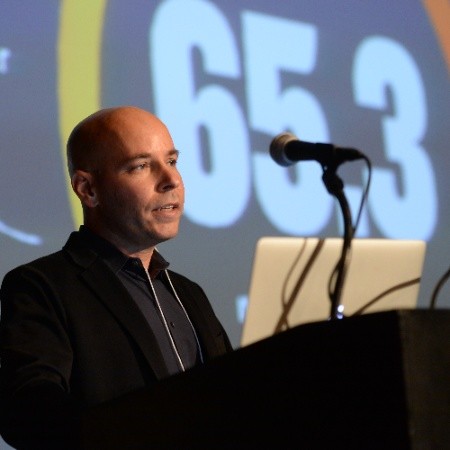The sharing economy is usually identified with the 99 percent. Think Airbnb, BookMooch or Freecycle. You probably won’t find the 1 percent crashing in a spare room or scoring a free microwave. These rich people don’t have the need or will to share resources, right? Well, they actually do. Apparently, the 1 percent is interested in sharing as much as the rest of us.
It’s true that you won’t find the 1 percent checking your couch on CouchSurfing or looking to take a ride with you on Zimride, but it doesn’t mean that they’re not interested in sharing. They just have different sharing services, which are more luxurious and usually are not open to commoners. While the 99 percent share cars on Getaround or RelayRides, or swap clothes on SwapStyle.com, the rich share luxury cars on HiGear and swap designer clothes on ReFashioner.
It’s very interesting to see this luxurious sharing services evolving as a niche of what Sara Horowitz, the founder of Freelancers Union, called ‘the quiet revolution’. Yet, it’s not that surprising. One indication that affluent people are willing to participate in sharing programs can be found in a new Zipcar survey, which checked the likeliness of participation in sharing programs with regards to media, car and home or vacation sharing.
The survey found that in all cases Millennials (18-34 year olds) are the most enthusiastic group. While other age groups (which are probably wealthier) showed less enthusiasm, the results still showed considerable interest among these groups in sharing programs. For example, about half of Gen-Xers (35-44) said they were likely to participate in car or home/vacation sharing programs. Even the baby boomers weren’t completely negative about it, around 10% likely to participate in such programs.
So we see that affluent people are willing to participate in sharing programs, but that’s not all. Apparently, some affluent people are not that affluent these days, at least when it comes to cash flow and wouldn’t mind sharing some of their assets if it generates them some money, or saves them some. “Luxury homeowners have a lot of equity tied up in their homes, and with the current state of the markets, many are house rich but cash poor,” Margaret Carr of Exclusive Exchanges, a website catering to affluent swappers, explained to Fast Company’s Matthew Kronsberg.
If the luxury sharing services sound somewhat compelling to you, and you start dreaming about arranging a 4,000-square-foot Soho loft on Exclusive Exchanges for your next visit in NY, or on adding a few Yves Saint Laurent items to your wardrobe on ReFashioner, I’ve got three words for you: forget about it. One big difference between luxury sharing services and ‘regular’ sharing services is that they’re not for everyone.
ReFashioner and I-ELLA, for example, are invitation-only fashion swapping sites. Exclusive Exchanges requires you to be a member with fees starting at $189 a year. On top of that, you should “own a well-appointed home in a desirable destination” to become a member. With HiGear, it’s a little bit easier as their main requirements relate more to your driving history, yet you still have to pay a $1,000 security deposit for each rental.
One commonality luxury and "regular" sharing services share is high interest from investors. Take for example car sharing services. RelayRides is backed by GM and Google and Wheelz raised $2 million in funding from Social+Capital Partnership, Felicis Ventures and Red Swan Ventures. Meanwhile luxury service HiGear raised $1.3 million last October in seed funding from BV Capital, Battery Ventures, 500 Startups and angles including Zipcar investor Craig Sherman and Kevin Chou.
HiGear, which launched only couple of months ago, is specializing in high-end auto brands only, including Mercedes, BMW, Audi, Aston Martin, Lamborghini and Tesla. While regular car share services focus on renting out neighborhood cars for rates as low as $5 to $10 per hour, and many drivers use them to make small trips around town, HiGear renters pay a daily fee, which can be anywhere between $44 for a 2005 Mercedes Benz C-Class to $1,000 for a 2002 Ferrari 360. According to HiGear’s website, a typical luxury or sports car can generate $6,000 - $8,000 per year through HiGear with only a handful of rentals each month. That’s not bad even for a Ferrari or a Lamborghini owner!
The fact that luxury services are on the rise shows that the inefficiency of our consumption economy relates to 100% of the population. It also shows that the vast opportunities to use resources in a smarter way are everywhere. And who knows, maybe the sharing economy will become even the place, where the 99 percent and 1 percent can engage and find common ground to create a better and more sustainable economy.
Image credit: navnetsio, Flickr Creative Commons
Raz Godelnik is the co-founder of Eco-Libris, a green company working to green up the book industry in the digital age. He is also an adjunct professor in the University of Delaware’s Alfred Lerner College of Business and Economics.

Raz Godelnik is an Assistant Professor and the Co-Director of the MS in Strategic Design & Management program at Parsons School of Design in New York. Currently, his research projects focus on the impact of the sharing economy on traditional business, the sharing economy and cities’ resilience, the future of design thinking, and the integration of sustainability into Millennials’ lifestyles. Raz is the co-founder of two green startups – Hemper Jeans and Eco-Libris and holds an MBA from Tel Aviv University.














